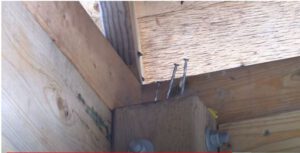 Australia is home to a diverse array of bird species, many of which may decide to call your roof their home. While the sight and sound of these winged creatures can be pleasant, their nesting habits can cause significant problems, from structural damage to health risks due to droppings. This article explores practical ways to prevent birds from nesting on your Australian roof.
Australia is home to a diverse array of bird species, many of which may decide to call your roof their home. While the sight and sound of these winged creatures can be pleasant, their nesting habits can cause significant problems, from structural damage to health risks due to droppings. This article explores practical ways to prevent birds from nesting on your Australian roof.
Understanding Bird Behaviour
Before addressing the issue, it’s essential to understand why birds nest on roofs. Birds seek out safe, elevated places to build their nests, away from predators and close to food sources. Roofs, particularly those with certain features such as chimneys or overhanging eaves, provide the perfect sanctuary. Understanding this behaviour can help in formulating effective deterrence strategies.
Bird-Proofing Your Roof
Preventing birds from nesting on your roof involves making the environment less appealing or accessible. Here are several strategies:
- Regular Maintenance and Repairs: Regularly inspect your roof for signs of bird activity. Patch up any holes, cover open vents or chimneys with mesh, and fix loose or broken tiles that birds could exploit.
- Install Bird Spikes or Nets: Bird spikes or nets can be installed on favoured nesting spots. They create a physical barrier that discourages birds from landing. It’s crucial to install these devices correctly to ensure they’re effective and don’t harm the birds.
- Use Bird Repellents: Various bird repellents are available, such as gels that create a sticky surface birds dislike. Ultrasonic devices that emit high-frequency sounds can also be used, but their effectiveness varies.
- Prune Overhanging Branches: Trees near your home can provide easy access to your roof for birds. Regularly pruning these branches can help keep birds at bay.
Legal Considerations
In Australia, all native birds, their eggs and nests are protected under the Environment Protection and Biodiversity Conservation Act 1999, and similar laws exist at the state level. It’s illegal to remove a nest containing eggs or chicks. If you discover an active nest, it’s advisable to wait until the breeding season ends before taking deterrent measures. For advice on handling this delicate situation, contact your local wildlife authority.
Professional Bird Control Services
If bird activity on your roof persists despite your efforts, it might be worth considering professional bird control services. They have the expertise and resources to handle the situation effectively and humanely, following local regulations.
Dealing with Health Risks
Bird droppings can pose a health risk as they may carry diseases. It’s essential to clean affected areas thoroughly and promptly. Using protective clothing and a mask during cleaning can prevent exposure to harmful pathogens.
Preventing Future Nesting
 Preventing birds from returning involves consistent deterrence efforts. Keep your roof in good repair, ensure potential nesting spots remain unattractive or inaccessible, and monitor your roof regularly, especially during nesting season. If you notice signs of birds returning, act swiftly to deter them before they settle in.
Preventing birds from returning involves consistent deterrence efforts. Keep your roof in good repair, ensure potential nesting spots remain unattractive or inaccessible, and monitor your roof regularly, especially during nesting season. If you notice signs of birds returning, act swiftly to deter them before they settle in.
You can seal off entrances with mesh or hardware cloth to create an impenetrable barrier. If birds start nesting in one specific area, you may need to remove the nest as well. Make sure to do this safely and humanely – never disturb a bird’s nest if it contains eggs or chicks!
Which Birds Pose Risks?
Some birds can carry diseases, while others may damage your roof with their nesting materials and sharp talons. Common birds such as woodpeckers, crows, pigeons, and sparrows are known to cause damage to roofs. Other birds of concern include ducks, starlings, blackbirds, swallows and bats.
The Dangers of Bird Droppings
Bird droppings are not only unsightly, but they can also corrode and discolor your roof’s surface. In some cases, bird droppings can even cause permanent damage to your roof if left untreated. Additionally, bird droppings can create an ideal environment for mold and mildew to thrive, causing further damage.
Conclusion
While birds are a delightful part of Australia’s wildlife, their nesting habits can cause issues for homeowners. Regular roof maintenance, installing deterrents, and understanding local wildlife laws are all crucial aspects of preventing birds from nesting on your roof. Remember, the goal is not to harm these creatures but to encourage them to find a more suitable home away from your roof. If in doubt, don’t hesitate to contact a local professional bird control service or your local wildlife authority for advice.